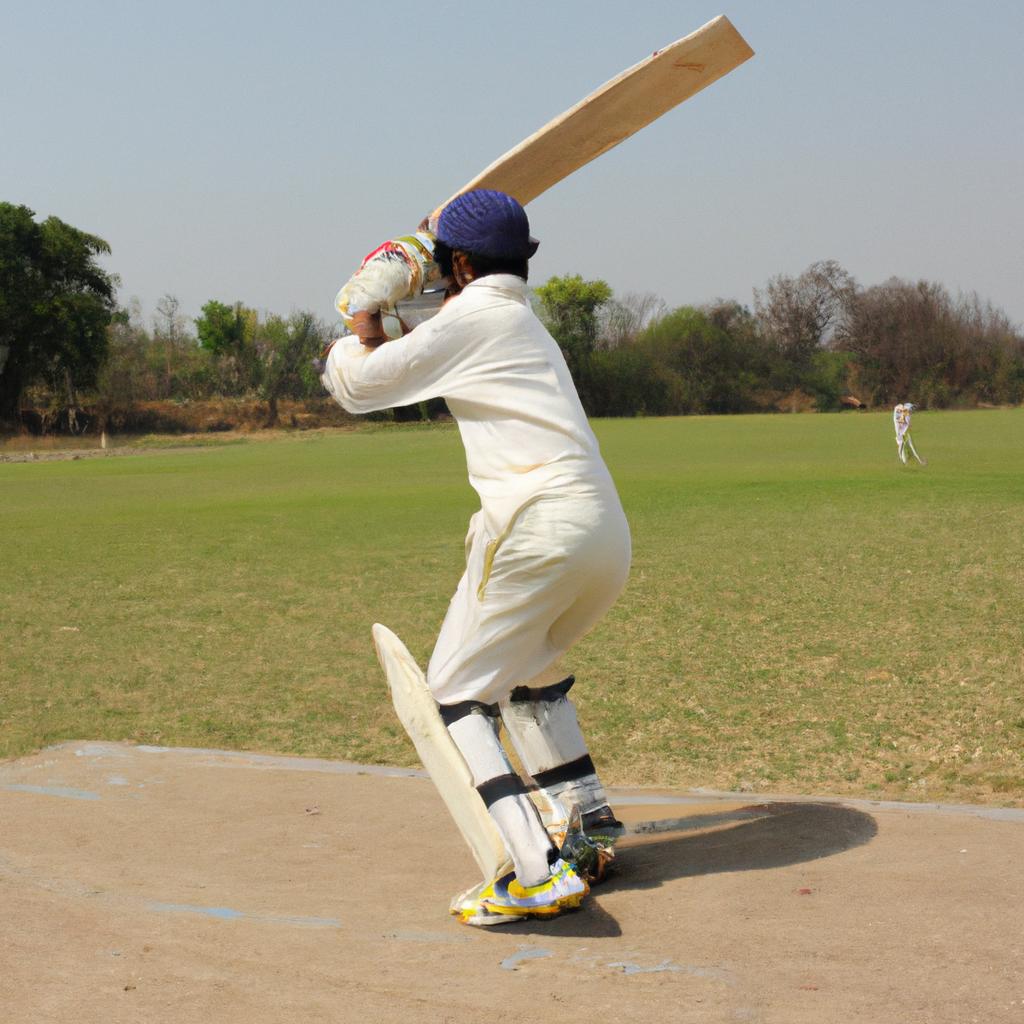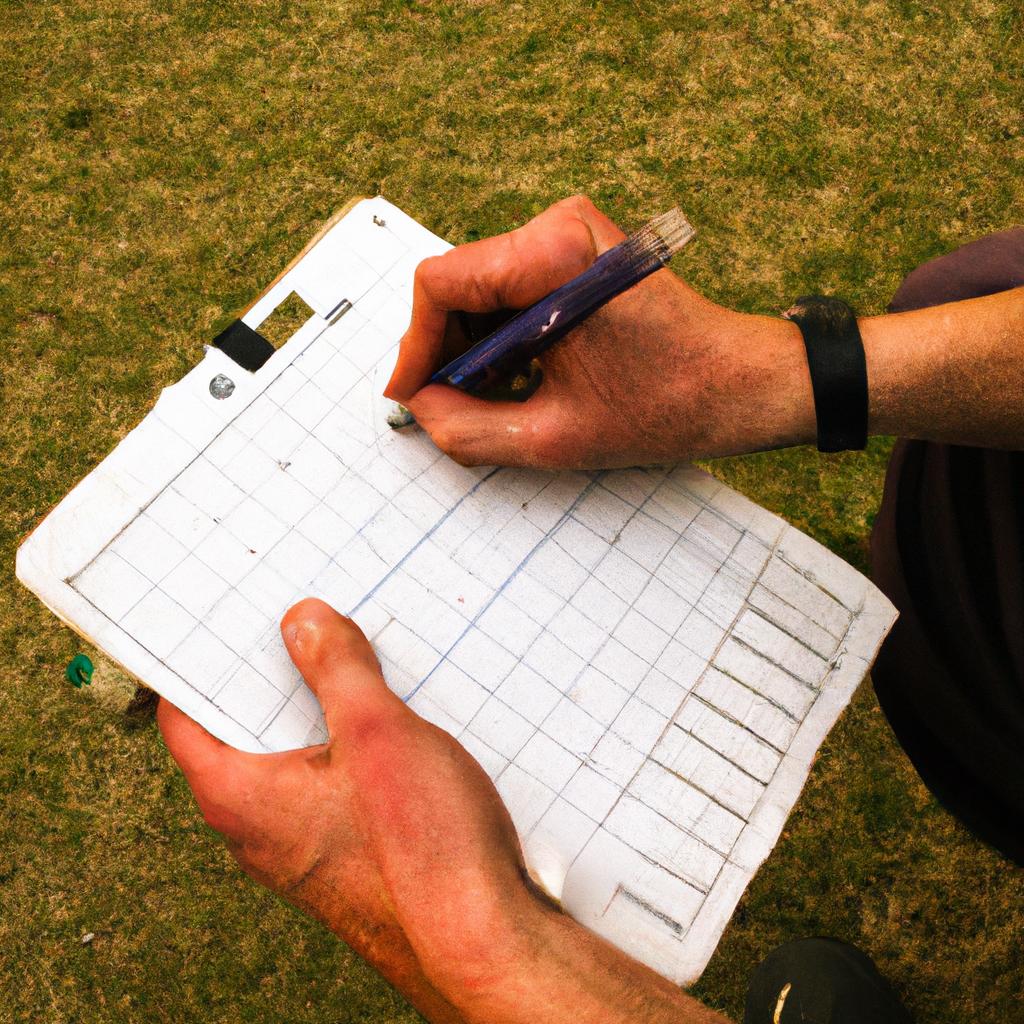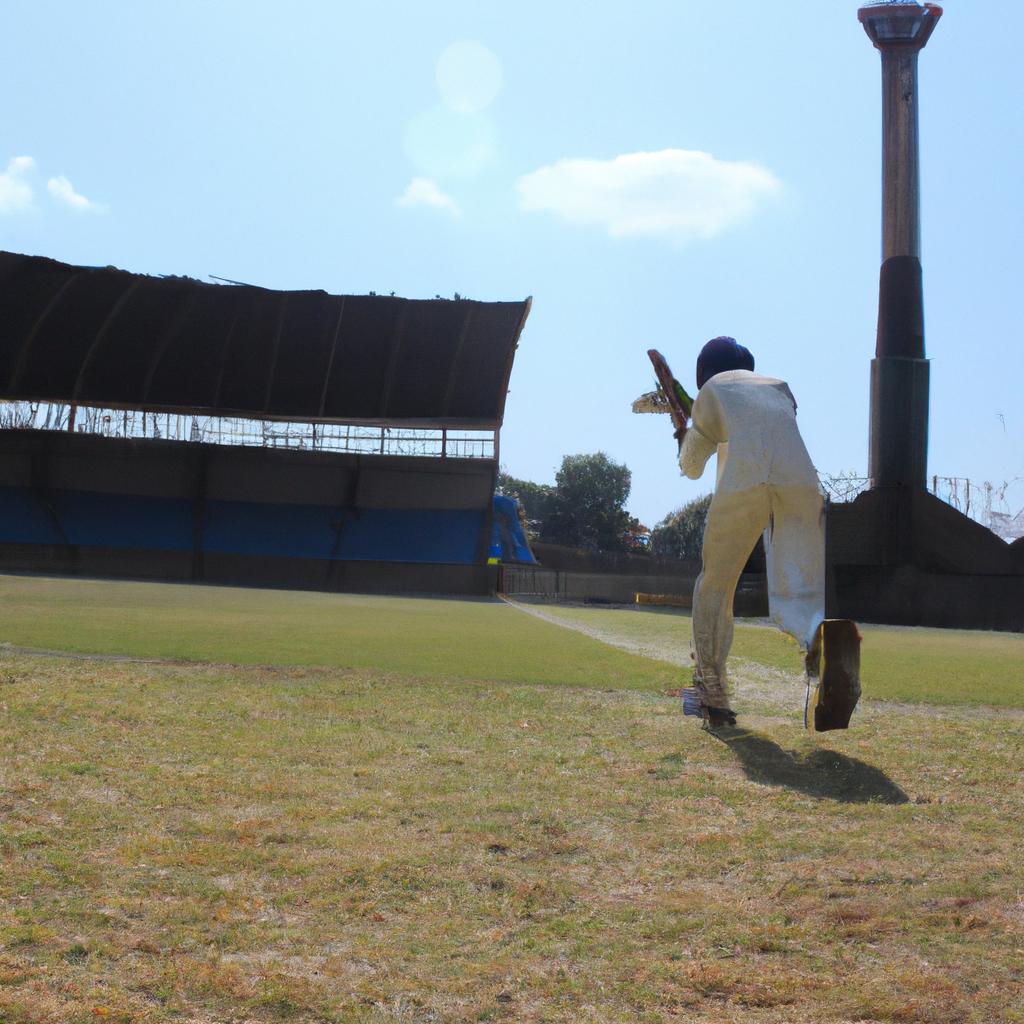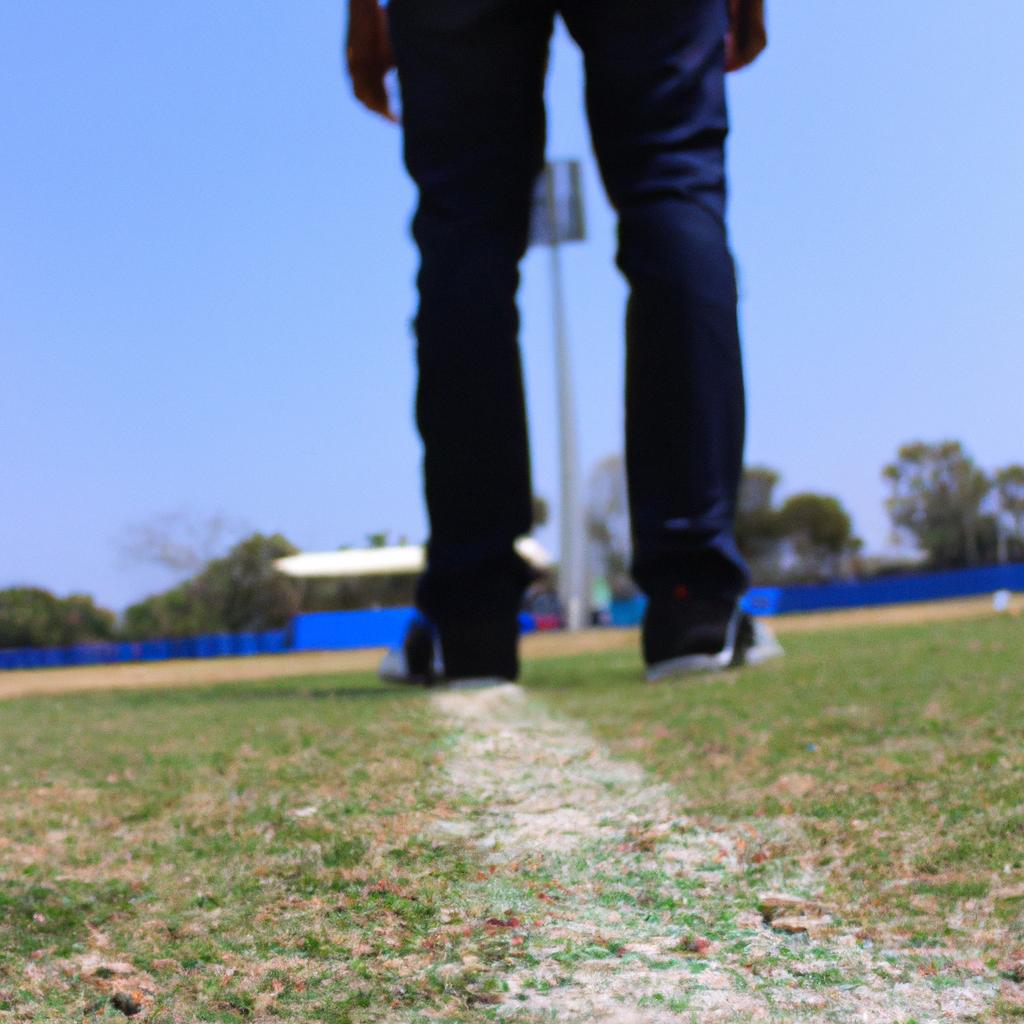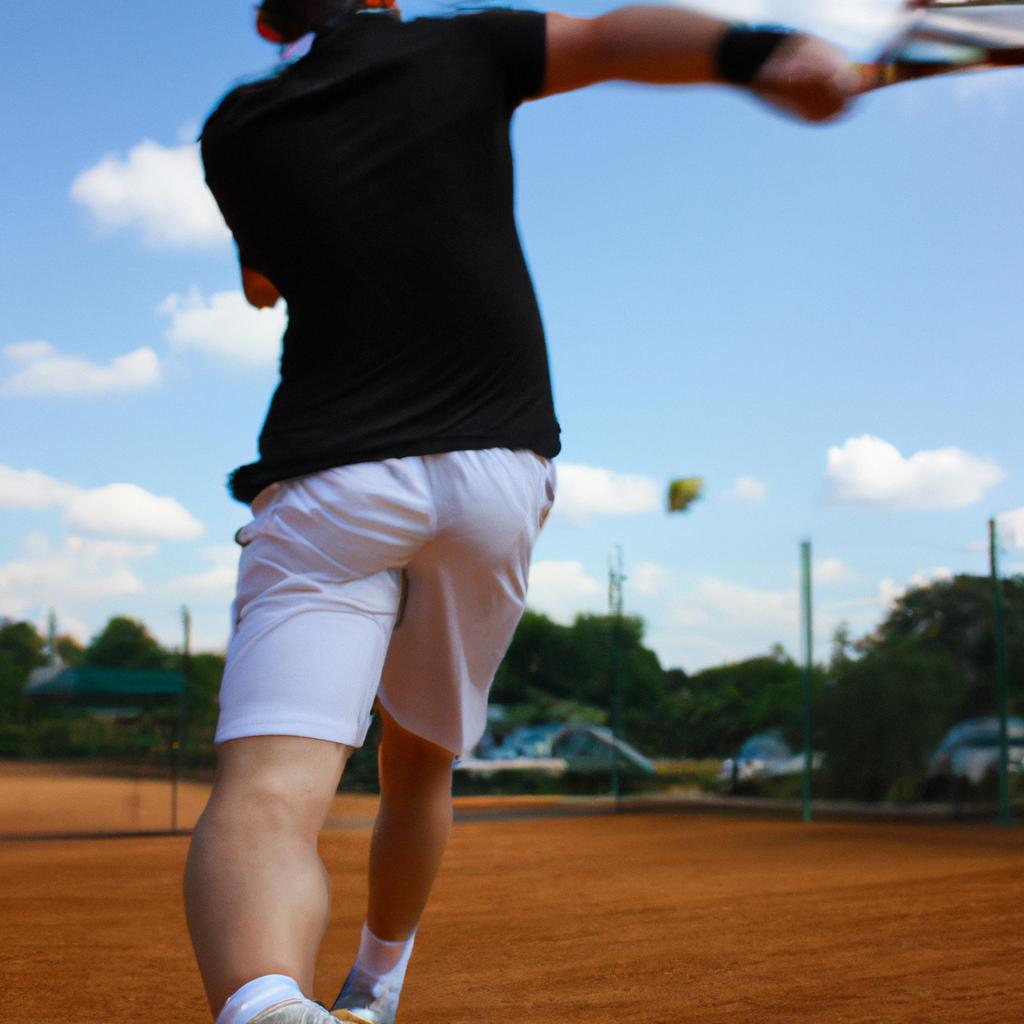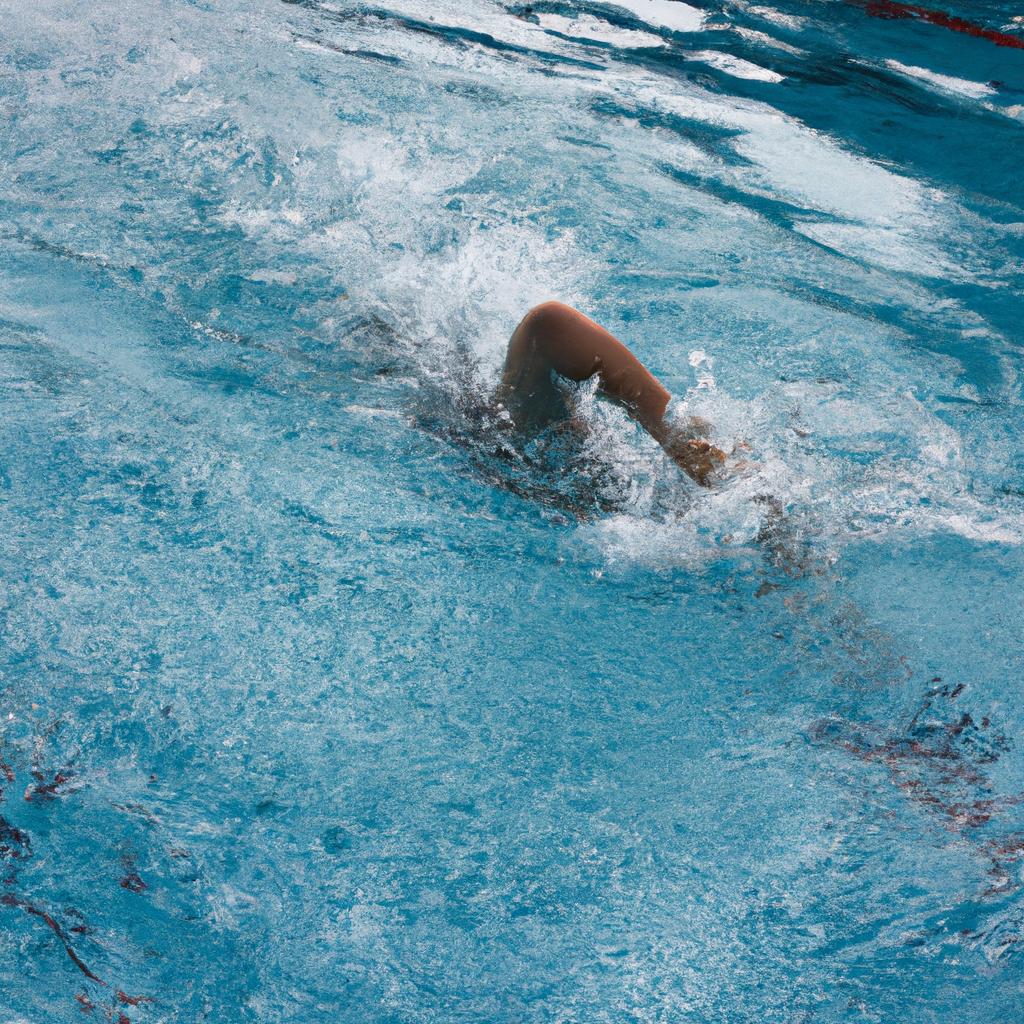Cricket, a popular sport played in many countries around the world, is known for its unique set of equipment that players use during matches. The cricket gear consists of various items designed to protect and enhance players’ performance on the field. For instance, imagine a scenario where a professional cricketer steps onto the pitch without proper protective gear such as helmets or pads. In this case, not only would their safety be compromised, but their ability to play at an optimal level would also be hindered.
The significance of cricket gear goes beyond mere protection; it plays a crucial role in determining player performance and overall game strategy. Each piece of equipment serves a specific purpose and can greatly impact both batting and fielding skills. Batsmen rely heavily on well-made bats tailored to suit their individual preferences and playing style. Similarly, bowlers require appropriate footwear with good grip to maintain balance while delivering accurate deliveries. Additionally, wicketkeepers benefit from specialized gloves designed to provide maximum dexterity for catching fast-paced balls.
Understanding the importance of cricket gear is essential not just for players but also for enthusiasts who want to appreciate the intricacies of the sport fully. This article aims to delve into the details of each item comprising the cricket gear kit, shedding light on its importance and functionality in the game.
Firstly, let’s explore the most critical piece of protective gear in cricket: the helmet. Designed to safeguard batsmen from potentially dangerous head injuries, helmets are constructed with a hard outer shell and padded interior. They provide protection against fast-paced deliveries that may hit the head or face area. Without a helmet, players would be at risk of serious injury and might hesitate while facing quick bowlers, affecting their performance.
Next, we have batting pads or leg guards. These are worn by batsmen to shield their legs from impact when facing bowlers. Pads cover the shin area and extend up to the knee, providing protection against lethal deliveries aimed at the lower limbs. By wearing these pads, batsmen can confidently face bowlers without fearing injury, allowing them to focus on their shots and play more effectively.
Another vital component of cricket gear is gloves. Batsmen wear gloves primarily for two reasons: protection and grip. Gloves offer padding on the palms and fingers, guarding against ball impacts during shots and ensuring comfort while holding the bat handle. Additionally, they enhance grip strength, enabling better control over the bat swing and increasing shot accuracy.
Moving on to fielding equipment, we have fielders’ gloves. Fielders wear specialized gloves designed for catching and fielding balls efficiently. These gloves feature a larger surface area with extra padding on specific areas such as fingertips to aid in clean catches and reduce hand injuries caused by fast-moving balls.
Additionally, cricket gear includes thigh guards worn underneath clothing by batsmen for added protection against thigh injuries caused by wayward deliveries hitting this vulnerable area.
Lastly, appropriate footwear plays a crucial role in cricket gear. Cricket shoes or spikes provide stability and grip on different types of surfaces found in cricket grounds such as grass or artificial turf pitches. Bowlers rely on good traction to maintain balance during delivery actions, preventing slips that could affect their accuracy.
In conclusion, cricket gear is an integral part of the sport that ensures players’ safety while optimizing their performance. From helmets and pads for protection to gloves for enhanced grip and catching ability, each piece serves a vital purpose. Understanding the significance of cricket gear enhances our appreciation for the game and highlights how these items contribute to the overall strategy and success of players on the field.
Bat
Bat
Cricket, a popular sport played in various countries around the world, requires several pieces of equipment for players to participate effectively. One essential item is the bat, a specialized instrument used by batsmen to strike the ball and score runs for their team. To illustrate its significance, consider the case of an international cricket match where a skilled batsman successfully uses his bat to hit consecutive boundaries, resulting in a dramatic increase in his team’s total score.
The cricket bat consists of several key components that contribute to its functionality and performance on the field. Firstly, it features a long handle made from sturdy wood such as willow or Kashmiri willow. This material is chosen for its strength and flexibility, allowing the player to maneuver and control the bat with precision during gameplay. Additionally, the blade of the bat is typically flat and wide, providing a larger surface area for striking the ball accurately.
To further emphasize the importance of this piece of equipment within cricket culture, let us explore some emotional aspects associated with it:
- The sight of a well-maintained bat invokes nostalgia among fans who have cherished memories of watching iconic cricketers create history using similar instruments.
- Owning a high-quality bat evokes pride among aspiring young players who dream of emulating their favorite sports stars.
- Witnessing powerful shots being executed flawlessly with a bat can generate excitement and awe among spectators at live matches or through televised broadcasts.
- The sound produced when the ball connects with the sweet spot of a bat creates anticipation and suspense among both players and viewers alike.
In summary, the cricket bat holds immense value within games and sports due to its integral role in enabling batsmen to showcase their skills and contribute significantly towards their team’s success. Its design elements such as materials used, shape, weight distribution enhance performance while simultaneously evoking emotions associated with tradition, aspiration, admiration, and thrill.
Transitioning seamlessly into our next section, let us now delve into another crucial aspect of cricket equipment – the ball.
Ball
Transition from the previous section H2:
Having discussed the essential component of cricket, which is the bat, we now turn our attention to another crucial aspect of this beloved sport – the ball.
Section: Ball
The ball used in cricket plays a pivotal role in determining the outcome of a match. It requires careful selection and meticulous craftsmanship to ensure fair play and maintain consistency throughout the game. To illustrate, let us consider a hypothetical scenario where two teams are competing on a pitch known for its unpredictable bounce. A poorly made or improperly balanced ball could significantly impact both batting and bowling performances, making it challenging for players to adapt their strategies effectively.
A well-designed cricket ball possesses several key characteristics that contribute to its performance on the field:
- Material: Traditionally, cricket balls were made using cork encased in tightly wound layers of twine covered by leather. The leather covering ensures durability while providing grip and swing variations during gameplay.
- Weight: Cricket balls weigh between 155.9 and 163 grams (5.5 and 5.75 ounces). Weight affects how fast bowlers can deliver the ball and influences factors such as spin control and swing movements.
- Seam: The seam is an integral part of a cricket ball’s construction, consisting of stitching along one side. Bowlers strategically utilize the raised seam to generate swing through air movement or induce lateral deviance off the pitch.
- Color: Currently, international matches use red balls in test matches and day-night games with white balls under floodlights. White balls are also utilized in limited-overs formats. The color variation helps players differentiate against different backgrounds based on lighting conditions.
To provide further insight into these important aspects of cricket equipment, let us examine them closely through a table highlighting their significance:
| Aspect | Significance |
|---|---|
| Material | Ensures durability |
| Weight | Influences speed and control |
| Seam | Enables varied bowling techniques |
| Color | Provides visibility |
In light of the aforementioned characteristics, it is evident that a well-constructed cricket ball plays an indispensable role in maintaining fairness and excitement within the game. Its quality directly impacts both batting and bowling performances, making it essential for players to adapt their strategies accordingly.
Transition:
With an understanding of the criticality of the ball in hand, we now shift our focus towards another vital component of cricket – the wickets.
Wickets
Equipment in Games and Sports: The Cricket Gear
Ball handling plays a crucial role in the game of cricket. It requires precision, accuracy, and strategic planning to achieve desirable results. In addition to the ball itself, players rely on various equipment to enhance their performance on the field.
One example that highlights the importance of proper gear is when a batsman faces a fast-paced bowler. Without appropriate protection, such as helmets or chest guards, the risk of injury significantly increases. These safety measures not only provide physical protection but also instill confidence in players, enabling them to focus on their technique without fear of getting hurt.
To ensure optimal playability and comfort for cricketers, several factors come into consideration when designing cricket gear:
- Material: Cricket gear is usually made from lightweight yet durable materials like high-density foam rubber and reinforced carbon fiber composites.
- Design: Equipment manufacturers take ergonomics into account while crafting gear to maximize flexibility and ease of movement during gameplay.
- Customization: Cricketers often prefer personalized equipment that suits their playing style and preferences.
- Maintenance: Proper care and maintenance are essential to prolonging the lifespan of cricket gear and ensuring it remains in top condition for extended periods.
| Advantages | Disadvantages | |
|---|---|---|
| Helmets | Provides head protection against injuries caused by fast bowling or accidental hits | Can sometimes obstruct vision or cause discomfort due to inadequate fit |
| Chest Guards | Offers vital torso protection against fast deliveries aimed at vulnerable areas | May restrict mobility if ill-fitting or bulky |
| Gloves | Enhances grip strength while batting or wicketkeeping, reducing the chance of errors | Poorly ventilated gloves can lead to sweaty hands impacting control |
In conclusion, having suitable cricket gear is imperative for both safety and performance enhancement purposes. By employing advanced materials, ergonomic designs, customization options, and proper maintenance techniques, players can optimize their playability while minimizing the risk of injuries.
Transitioning into the subsequent section on “Pads,” it is important to understand how this equipment contributes to a cricketer’s protection and performance on the field.
Pads
Wickets are a crucial component of cricket, serving as targets for the bowlers and fielders to dismiss the batsmen. However, wicket-keeping is an equally important aspect of the game that requires specialized equipment. Wicket-keepers play a vital role in catching deliveries from the bowler and attempting to stump or run out batsmen. To protect themselves and enhance their performance, wicket-keepers use various gear.
One example of wicket-keeping gear is gloves. These gloves are specifically designed with additional padding on the palms and fingers to provide protection against fast-paced deliveries. They enable wicket-keepers to have a firm grip while catching balls traveling at high speeds, reducing the chances of dropping catches.
In addition to gloves, wicket-keepers also wear pads called leg guards or shin guards. These pads offer protection to the legs when they come into contact with the ball during attempted stumping or running outs. The leg guards consist of thick foam padding enclosed within leather casing, providing both comfort and safety.
- Increased confidence: Properly fitted gear gives wicket-keepers peace of mind knowing they are adequately protected.
- Enhanced performance: Protective gear enables them to focus on their skills without worrying about potential injuries.
- Reduced risk: Gear minimizes the chance of sustaining severe injuries such as fractures or bruises.
- Professional standards: Utilizing appropriate equipment showcases professionalism in cricket matches.
Moreover, it is essential to highlight specific features by incorporating a table:
| Equipment | Features |
|---|---|
| Gloves | – Extra palm padding- Reinforced finger sections- Adjustable wrist strap |
| Leg Guards | – Thick foam cushioning- Leather outer shell for durability- Velcro straps for secure fit |
Looking ahead, let us explore another significant piece of cricket gear – helmets. Helmets are primarily worn by batsmen to protect their heads from fast-paced deliveries, ensuring the safety and well-being of players on the field.
Transitioning into the subsequent section about “Helmets,” it is important to consider the importance of head protection in cricket.
Helmet
Pads are an essential component of cricket gear, providing protection to the lower limbs during a game. Designed to cover the shins and knees, pads absorb impact from fast-paced bowling deliveries and prevent injuries such as fractures or bruises. To illustrate their importance, let’s consider a hypothetical scenario: imagine a batsman facing a bowler who consistently delivers balls at high speed. Without proper leg protection in the form of pads, the batsman would be at significant risk of sustaining severe injuries.
When it comes to selecting suitable cricket pads, there are several factors that players need to consider:
- Size: Pads come in various sizes to cater to different age groups and body types. It is crucial for players to choose pads that fit them well, ensuring optimum comfort and maximum protection.
- Material: Quality cricket pads are typically made from durable yet lightweight materials like polyurethane or high-density foam. These materials offer excellent shock absorption capabilities while allowing freedom of movement.
- Straps: The straps on cricket pads play a vital role in securing them firmly around the legs. Adjustable straps enable players to find the perfect fit, minimizing any chances of slippage during intense gameplay.
- Design features: Some modern-day cricket pad designs incorporate additional protective elements such as knee rolls or reinforced sections for enhanced safety.
- Protection against potential career-threatening injuries
- Confidence boost due to increased feeling of safety
- Ability to focus better on batting without worrying about getting hurt
- Enhanced performance by being able to take risks confidently
Additionally, we can present relevant information using a table format:
| Factor | Importance |
|---|---|
| Size | Crucial |
| Material | Essential |
| Straps | Vital |
| Design | Beneficial |
In summary, cricket pads provide indispensable protection for cricketers, shielding their legs against the impact of fast-paced bowling. By considering factors such as size, material, straps, and design features when selecting pads, players can ensure optimal comfort and safety during gameplay.
Gloves
Section H2: Gloves
After discussing the importance of helmets in cricket, let us now delve into another crucial piece of equipment – gloves. Just like helmets, gloves play a significant role in ensuring player safety and enhancing performance on the field. To illustrate this further, imagine a scenario where a batsman fails to wear gloves while facing fast-paced bowling; not only would their hands be exposed to potential injuries from impact with the ball or bat, but their grip on the bat may also become compromised.
Gloves serve multiple purposes in cricket, here are some key points to consider:
- Protection: The primary function of gloves is to protect the hands from injury. They provide padding and cushioning against impact when catching balls or deflecting them away during fielding. Additionally, they help minimize finger fractures that can occur due to mishits.
- Grip Enhancement: With leather palms and rubberized fingers, gloves improve grip strength and control over the bat. This allows players to have better command while playing shots and reduces the chances of losing hold during powerful strokes.
- Sweat Absorption: Cricket matches often require extended periods of physical exertion under scorching sun conditions. Gloves made with sweat-absorbent materials aid in maintaining a firm grip by reducing hand perspiration, preventing slippage due to moisture.
- Flexibility: Modern cricket gloves are designed for maximum flexibility without compromising protection. Advanced technologies used in manufacturing ensure that players retain full dexterity while wearing gloves, allowing natural movement required for accurate catching and throwing.
To emphasize the significance of gloves visually, consider this table highlighting some essential features provided by different glove models:
| Glove Model | Key Features |
|---|---|
| Model A | Reinforced finger protection |
| Model B | Enhanced ventilation system |
| Model C | Superior shock absorption technology |
| Model D | Moisture-wicking fabric |
Remember, the right pair of gloves can make a substantial difference in player safety and performance. Therefore, it is essential for cricketers to choose gloves that provide optimal protection while allowing them to maintain control and flexibility on the field.
In summary, gloves are an indispensable part of cricket gear, offering crucial hand protection against injuries and enhancing overall gameplay. With their ability to improve grip strength, absorb sweat, and ensure flexibility without compromising safety, they contribute significantly to a player’s performance. Choosing the appropriate glove model with features such as reinforced finger protection or moisture-wicking fabric becomes vital for every cricketer aiming for success on the pitch.


